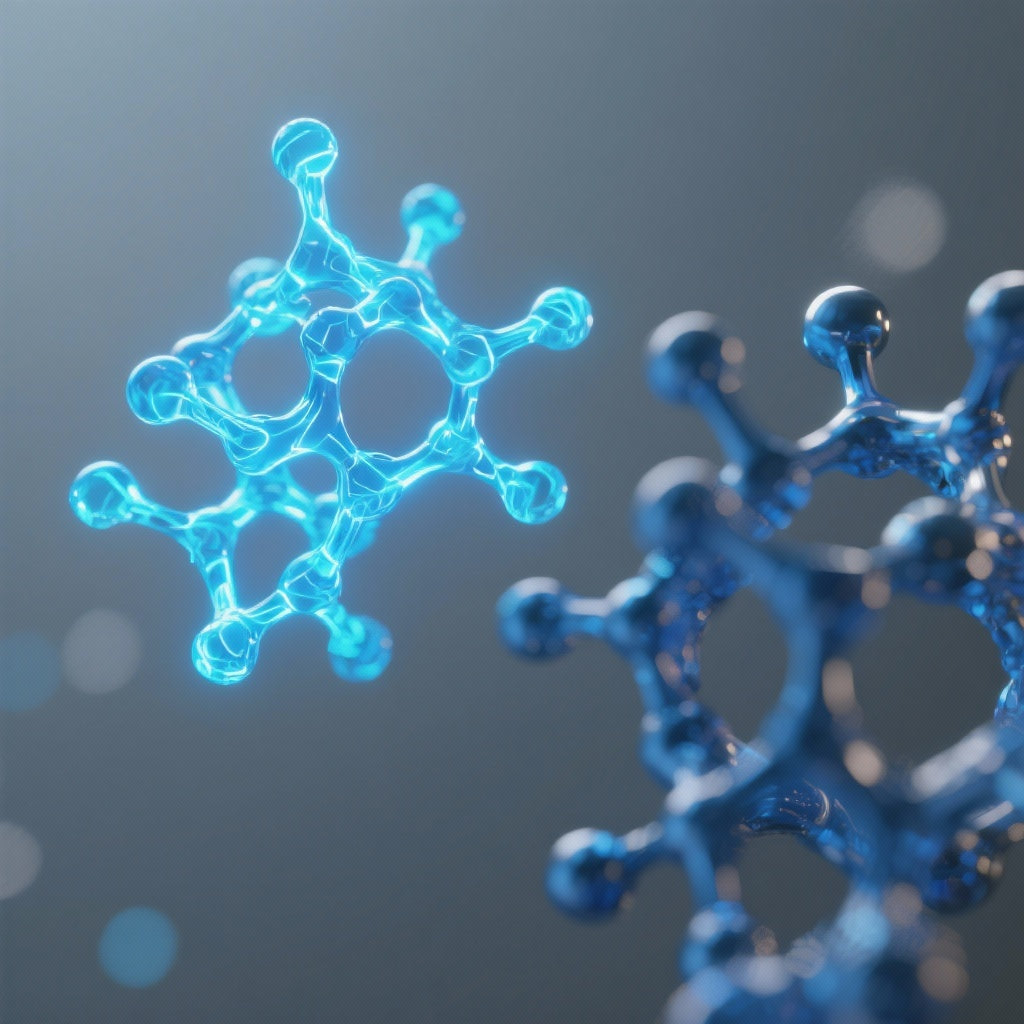L-Arginine vs Citrulline: Which amino acid will improve your performance?
In the relentless pursuit of performance optimization, the world of dietary supplements is a dense and often confusing jungle. Two names consistently come up when it comes to improving muscle pump, endurance, and nitric oxide production: L-Arginine and L-Citrulline . For years, arginine reigned supreme, touted as the direct precursor to the coveted nitric oxide (NO). However, science has advanced, and a new challenger, citrulline, has not only matched but far surpassed its predecessor. If you're wondering which of these two amino acids deserves a spot in your shaker, you've come to the right place. This article will dissect the science behind these two molecules, objectively compare their effectiveness, and provide a clear verdict to help you make the smartest choice for your body and goals.
Understanding the Role of Nitric Oxide (NO) in Performance
Before delving into the Arginine vs. Citrulline debate, it's essential to understand why we're interested in them. Their main benefit lies in their ability to increase the production of nitric oxide, a gaseous molecule with extraordinary properties for any athlete.
What is nitric oxide and why is it crucial?
Nitric oxide is a vasodilator . In practical terms, this means it helps relax and widen the walls of your blood vessels. Imagine going from a small country road to a four-lane highway. The result? Significantly improved blood circulation. For your muscles during exercise, this translates to:
- Increased oxygen supply: More oxygen means more energy and better endurance.
- Better nutrient delivery: Amino acids, glucose and other essential nutrients reach your muscles more quickly.
- Efficient waste removal: Lactic acid and ammonia, responsible for fatigue and aches, are eliminated more quickly.
The direct link with muscle congestion (the "Pump")
That famous "pump" or congestion sensation, sought after by so many bodybuilders, is simply the direct result of this massive influx of blood into the muscles. While temporary, this congestion is more than just an aesthetic pleasure. It creates pressure on muscle cells, a phenomenon called "metabolic stress," which is one of the key mechanisms of hypertrophy (muscle growth).
L-Arginine: The Classic Precursor Under the Microscope
On paper, the logic behind L-Arginine is irrefutable. It's the amino acid our body uses directly to synthesize nitric oxide via an enzyme called NO synthase. Supplementation therefore seemed like the perfect way to boost this process. Unfortunately, human biology is more complex.
The Arginine paradox: why is direct supplementation often disappointing?
The main problem with oral L-arginine is its very low bioavailability . When ingested, a large portion is intercepted and degraded before it can do its job. This is known as the "arginine paradox." The culprit? An enzyme found in abundance in the intestines and liver: arginase. It breaks down arginine before it reaches the systemic bloodstream where it could be used to produce nitric oxide (NO).
The shocking figure: Studies estimate that more than 60% of orally ingested L-Arginine is broken down by the arginase enzyme before it even reaches the bloodstream.
This low absorption means not only that the effects on performance are minimal, but also that high doses are required, often leading to unpleasant gastrointestinal upset. A dead end for many athletes.
L-Citrulline: The Smart and Effective Alternative
Faced with the limitations of arginine, science has turned to its precursor: L-Citrulline. Named after the Latin word for watermelon ( citrullus ), where it is found in abundance, this amino acid offers an indirect, but much more effective approach.
The indirect but superior mechanism of action
L-Citrulline is the true Trojan horse of NO production. Unlike arginine, it is not targeted by the arginase enzyme in the intestine. It therefore easily crosses the intestinal and hepatic barriers to enter the bloodstream. Once in the blood, it is transported to the kidneys where it is converted... back into L-arginine ! By using this indirect pathway, L-Citrulline increases blood arginine levels much more significantly and sustainably than arginine itself.
"L-Citrulline supplementation is a more reliable and effective method for increasing L-Arginine levels in the body than L-Arginine supplementation itself. This is a major advancement for sports nutrition."
Citrulline Malate vs Pure L-Citrulline: What's the difference?
You'll often find citrulline listed as Citrulline Malate . This is simply L-Citrulline bound to malic acid. It's not just a marketing gimmick. Malic acid plays a role in the Krebs cycle, the process by which our body produces energy (ATP). In theory, malate could therefore help combat fatigue from another angle, in addition to the effects of citrulline. Most performance studies have been conducted with Citrulline Malate, often in a 2:1 ratio (two parts citrulline to one part malate).
The Head-to-Head Showdown: Arginine vs. Citrulline, the Point-by-Point Verdict
To get a clearer picture, let's directly compare the two competitors on the most important criteria for an athlete.
Absorption and Bioavailability
- Arginine: Low. Massively degraded in the intestine and liver.
- Citrulline: Excellent. Bypasses liver and intestinal degradation.
- Winner: L-Citrulline (by a long shot).
Impact on Nitric Oxide Levels
- Arginine: Weak and short-lived impact due to poor absorption.
- Citrulline: Raises plasma arginine and NO levels more significantly and for a longer duration.
- Winner: L-Citrulline .
Effects on performance
- Arginine: Study results are mixed, often inconclusive.
- Citrulline: Numerous studies show improved endurance, a significant reduction in muscle soreness, and an increase in the number of repetitions performed.
- Winner: L-Citrulline .
Digestive tolerance
- Arginine: Effective doses (often >10g) can cause gastrointestinal disturbances.
- Citrulline: Very well tolerated, even at high doses.
- Winner: L-Citrulline .
Dosage and Optimal Usage Protocol
Now that the winner is clearly identified, how can L-Citrulline be used to maximize its benefits?
What dose of L-Citrulline is needed for visible results?
Scientific research has established effective dosages for performance. It is recommended to aim for:
- 6 to 8 grams of Citrulline Malate (2:1 ratio)
- Or 3 to 5 grams of pure L-Citrulline .
Carefully check the labels on your supplements. A product labeled "6g of Citrulline Malate" actually only contains 4g of pure L-Citrulline.
When should I take my supplement?
To maximize its vasodilatory effects during exercise, consume your dose of L-Citrulline approximately 30 to 60 minutes before your workout . This allows your body time to absorb it and convert it into arginine, raising your NO levels at just the right moment.
For more general advice on optimizing your nutrition, please visit our main information blog .
Your Questions about L-Arginine and L-Citrulline
Is L-Citrulline safe?
Yes, L-Citrulline is considered very safe. Studies have shown no significant side effects, even at doses of up to 15 grams per day. Its excellent digestive tolerability is one of its major advantages over L-Arginine.
Can I get enough Citrulline through diet?
It's difficult. The richest food source of L-citrulline is watermelon. However, you would need to consume more than a kilogram to reach a performance-enhancing dose, which isn't very practical before a workout. For healthy snack ideas, explore our healthy recipes .
Are the effects immediate?
Some effects, such as improved muscle pump, can be felt from the first dose. However, the benefits for endurance and fatigue reduction seem to accumulate. Regular supplementation (taken on training days) is recommended for optimal results.
The Verdict: L-Citrulline, Winner by Technical Knockout
The battle between L-Arginine and L-Citrulline has a clear winner. While arginine paved the way, science and experience have shown that L-Citrulline is a far superior option for anyone looking to enhance performance through nitric oxide production. Thanks to its exceptional bioavailability, it fulfills the promise arginine had but failed to deliver: sustainably increasing blood arginine levels.
The next time you choose a pre-workout, take the time to read the label. The presence of L-Citrulline (or Citrulline Malate) at the right dosage is a true indicator of quality and effectiveness. Choose science, not habit. For more tips on a healthy and high-performing lifestyle, visit our lifestyle blog .







